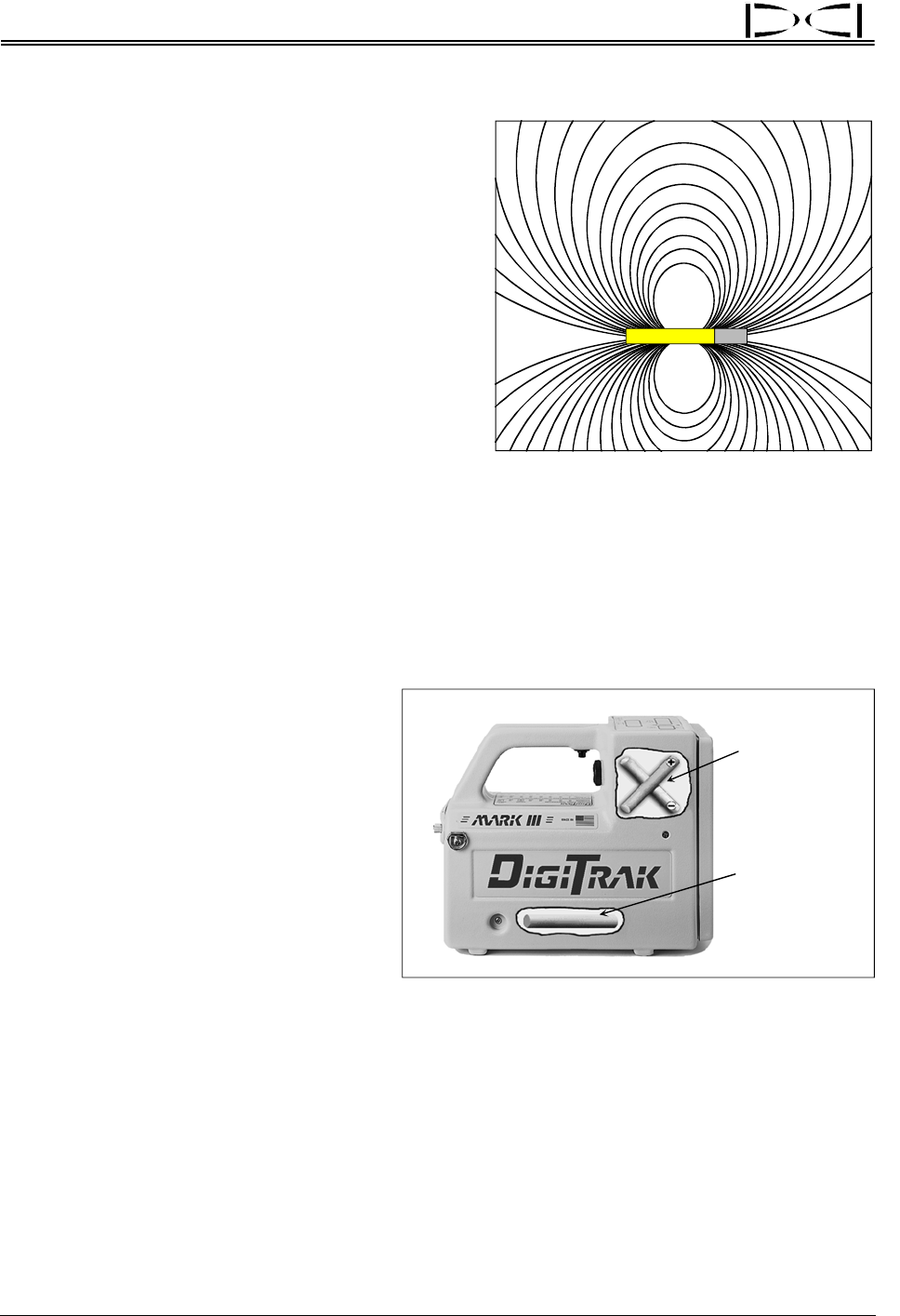User's Manual
Table Of Contents
- Mark III Directional Drilling Locating System
- Table of Contents
- Table of Contents (Cont.)
- Table of Contents (Cont.)
- Safety Precautions and Warnings
- Safety Precautions and Warnings (Continued)
- Dear Customer:
- 3-3000-00b-F.pdf
- 3-3000-00c-F.pdf
- Receiver
- Display Window Icons
- On/Off
- Receiving the Transmitter’s Signals
- Clicking vs. Holding the Trigger
- Changing the Receiver’s Channel Setting
- Changing the Depth Measurement Units (English vs. Metric)
- Battery Status Display for Receiver and Transmitter
- Warning Tones for Transmitter Overheat
- Ultrasonic Function
- Calibrating the Receiver
- Using Depth Antenna Plumb Line to Mark Locate Points
- Finding Firmware Version
- 5.0 Series Firmware Functions
- Receiver
- 3-3000-00d-F.pdf
- 3-3000-00e-F.pdf
- 3-3000-00f-F.pdf
- 3-3000-00g-F.pdf
- 3-3000-00h-F.pdf
- 3-3000-00i-F.pdf
- 3-3000-00j-F.pdf
- Locating
- Locating Mode
- Locate Points (FNLP & RNLP) and Locate Line (PLL)
- Handling the Receiver
- Distance Between FNLP and RNLP Due to Depth, Pitch, and Topography
- Using Plus/Minus Indicators for Locating
- Locating the Transmitter from the Drill
- Locating the Transmitter from the Front
- Method for Confirming Position
- Locating on the Fly
- Off-Track Locating
- Splitting the Front and Rear Negative Locate Points
- Four-Turn Technique
- Calculating Depth Based on Distance Between FNLP & RNLP
- Running off Pitch or Calculating Depth from Pitch
- Transmitter’s Signal Shape
- Antenna Configuration
- Signal Reception
- Front and Rear Negative Locate Points
- Positive Locate Line Above Transmitter
- Locating
- 3-3000-00k-F.pdf
- 3-3000-00l-F.pdf
- 3-3000-00m-F.pdf
- 3-3000-00n-F.pdf
- 3-3000-00o-F.pdf
- 3-3000-00p-F.pdf

Locating
®
Elliptical Shape of Transmitter Signal Field
Transmitter’s Signal Shape
It is important to understand some fundamental con-
cepts about the transmitter’s electromagnetic signal
and the way the receiver’s antennas read or receive
this signal. The shape of the transmitter’s signal field
is elliptical. This
elliptically shaped field combined with
the DigiTrak Receiver’s unique “X” antenna configura-
tion results in locating the transmitter at three specific
locations, not just the strongest/highest signal.
The transmitter’s electromagnetic field is made up of
many “field signal lines.” As you locate, you are
walking in this magnetic field and your receiver’s an-
tennas are picking up signal from those field lines.
Antenna Configuration
The DigiTrak Receiver has a total of three antennas. The single antenna near the bottom of the unit
receives pitch, roll, battery, and temperature status from the transmitter. The “locating antennas” are
located below the display windows and are in an “X” configuration. One of the antennas is referred to as
the minus (“–”) antenna and the other as the plus (“+”) antenna. The antennas are positioned at right
angles to one another (perpendicular),
each 45° to the surface below the
DigiTrak Receiver. As described above,
the more “in-line” the field line is with the
antenna, the higher the percentage of
“read” signal.
Depth
/
Locating
Antennas
Pitch
/
Roll
Antenna
Location and Orientation of Antennas in Receiver
Each antenna receives a different part of
the field signal. This information is
processed by the receiver to provide the
operator with a measurement of the
transmitter’s entire signal field strength—
not just a portion, as with conventional
cable locators.
Signal Reception
To understand how the antennas “read” these field lines, it is useful to imagine the field line as a stream
of water and the antenna as a pipe. If a stream of water is aligned parallel with the pipe, then 100% of
the water will flow through the pipe. If you turn the pipe 90° to the stream of water, no water will enter the
pipe. The same principle is true for the field line and the antenna; when they are parallel to one another
100% of the field line will be read by the antenna, and when they are perpendicular to one another none
(0%) of the signal will be read.
54 DigiTrak
®
Mark III Operator’s Manual










